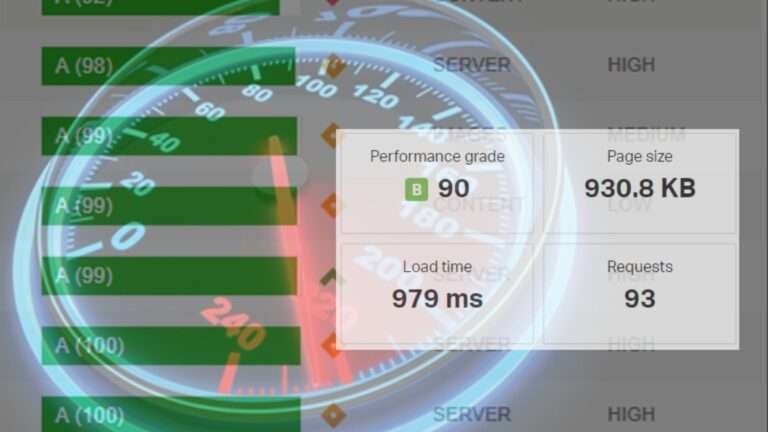
How to improve your SEO ranking by updating blog content
What is the significance of optimizing your website’s content? Consider the following organic traffic and conversion statistics:
- SEO generates around ten times as much traffic as pay-per-click advertising (mobile and desktop).
- On Google, the first organic desktop listing receives 19.3% of the clicks.
- There are 27.7% of clicks on the top organic mobile listing.
You’re undoubtedly already investing extensively in on-page, off-page, and technical SEO if you’re aware of these statistics. While this benefits your search performance, one thing you may be overlooking that can help you increase it even more: is re-optimizing old material.
If you don’t update your blog content regularly, you’re missing a chance to improve your SERP ranking (search engine results pages).
Let’s look at why re-optimizing is essential for your blog’s SEO strategy — and how to change website content properly.
Why Is It Important to Optimize Your Blog Content for Search Engine Rankings?
Every page on your website has the potential to be optimized. While product and service websites can assist visitors in comprehending your offer, they do not support aid conversions.
What if your visitors aren’t ready to buy right now? It is an area where blog content shines.
When your top-of-funnel audience uses Google, they’re looking for answers to their problems (and ways to resolve them). You can potentially build your internet presence and acquire high-level prospects if you write about these topics on your blog – and correctly optimize them.
SERP Performance Influencing Factors
The trick is to get people to locate your blog content organically, which means getting to Google’s first page. Several SEO ranking elements now play a crucial part in your SERP position. It includes the following:
- An essential element is a relevant (i.e., how closely your material is related to search intent)
- Page loading time
- Mobile-friendliness
- Links with technical SEO optimization (both internal and external)
- Signs of social interaction
- Experiential learning
Your blog is a search engine optimization (SEO) tool Goldmine
Targeting many SEO best practices at once with blog material is straightforward. It can be accomplished by:
- Including long-tail keywords in titles and content (with precise search intent) (content optimization)
- You connect keywords to titles and content (content optimization)
- Write about topics that are relevant to your audience should (user experience)
- Providing in-depth coverage of a subject as well as external links to trustworthy sources (user experience and link building)
- Adding social share buttons to your content will make it easier for people to share it (social signals)
As you can see, helpful, instructive, valuable, reputable, high quality and engaging material are more important than keywords.
How Updating Your Blog Can Help You Improve Your SEO Even More
However, after your blog post is published, the optimization process does not finish. Content re-optimization can boost traffic to old pieces by 106 percent, according to a HubSpot case study. Updating the content of your blog can enhance your search ranking in several ways:
Revitalize Your Content
Google enjoys keeping its search results up to date. New posts appear at the top of search engine results pages (SERPs). The only way you’ll come across stuff that’s several years old is if there are no updated information, links, and so on.
Increase your click-through rates.
Google isn’t the only one who appreciates new material. People also enjoy clicking on links that have recent dates. It indicates that they are receiving the most up-to-date knowledge on a subject.
Boost the Strength of Your Links
When updating your blog posts, you should focus on replacing broken and out-of-date links with relevant, up-to-date links. It is also an excellent opportunity to look for new and improved resources to add to the material.
Increase the depth of your content
Updating blog content allows you to do new research and get new data. If you come across new information, you can utilize it to improve your post and make it longer (and more valuable). Remember that if you can produce a more in-depth post than your competition, yours will likely rank higher.
Re-optimize with more appropriate keywords
Keywords can also become obsolete, particularly if the searcher’s intent changes. Check if the keywords and phrases you’re employing apply to your topic and offer. You should also seek new keywords that did not previously receive traffic but now do. Constantly update your metadata with any new keywords or phrases you discover.
Re-promote and distribute content
You’ll want to re-promote your blog post to your readership after you’ve updated it. You’ll receive more clicks and eyes on the page this way (hopefully, more dwell time on your blog). It’s an opportunity to increase traffic to previously successful posts.
How to Know Which Content to Re-Optimize and Update
So, how do you figure out which information needs to be updated so you can work smarter rather than harder? There’s no need to update every blog article on your website in a flurry. Instead, concentrate on information that satisfies the following criteria:
- It doesn’t appear in the top five results for the keywords you’re looking for on search engine
- The volume of searches for the current keywords is minimal.
- It doesn’t get much (if any) traffic, and it’s been declining in recent years.
- It contains links that are obsolete or broken.
- New evidence contradicts (or supports) what you’ve written.
You can utilize Google Search Console to identify pages that aren’t getting enough traffic to make this process easier. Once you’ve arrived, check for:
- Posts ranked 8-20 with a high click-through rate (CTR). These get a lot of clicks, but only a few of them make it past #7 in the SERPs. Because many pages ranked lower than No. 7 will not appear on the first page of SERPs, improving their rank will assist generate even more clicks.
- Posts at places 8-20 leave a strong impression. For high-volume searches, Google already considers these connections meaningful. However, it’s a little hidden, which reduces your CTR.
- Posts have a high impression rate but a poor click-through rate. These links appear in the SERPs but aren’t clicked (perhaps due to the headline, an outdated date, or a poor meta description).
How to Improve SEO by Updating Your Blog Posts (and Longevity)
You worked hard to turn your blog into a helpful resource. So you want to do everything you can to keep each post relevant (hopefully, forever)
Thankfully, there’s a science behind content longevity so that you can increase your chances of success. Here are a few strategies for turning your blog entries into long-term traffic generators:
Content Repurposing
You can repurpose each blog article into various forms of content. For example, if you have a blog article with many interesting statistics, you may make an infographic. You may also create a SlideShare presentation to post on social media sites like LinkedIn and Facebook.
Make sure it’s mobile-friendly.
If you’re surfing the web on a mobile device (as most people do these days), you’ll notice that Google prefers links to mobile-friendly web pages. It implies that your website should work on both smartphone and tablet screens. It’s also a good idea to ensure your page loads quickly to avoid losing visitors immediately. Your SEO ranking will encounter setbacks as a result of high bounce rates.
Make a pillar page for your website.
Is your blog post’s subject complex? Then take it a step further by making it a pillar page that links to cluster posts. Long-form entries that cover all facets of a topic are called pillars. The clusters delve deeper into each of the pillar content’s topics. This aids SEO since it delivers excellent value to visitors and encourages them to remain longer to read the pillar and its cluster pages. Recognize your pillar page as a resource that may inspire others to link to it (an SEO booster).
Boost the Reach of Your Social Media Posts
Sharing your blog entries on social media is a beautiful idea. Paying to boost the content, on the other hand, can help them gain greater visibility and traffic on social media sites like Facebook, LinkedIn, and Instagram.
Collaborate with a marketing firm to develop a blog SEO strategy.
To improve your search ranking and attract your target audience, you must create new content for your blog. However, when you also have to maintain your blog content regularly, it can be challenging to do.
That’s why partnering with a digital marketing agency is a good idea. By collaborating with one, you can ensure that your content strategy is always on track to produce the best outcomes for your company. Zionike offers digital marketing services to companies of all sizes.
Contact Zionike today for expert assistance with the optimization (and re-optimization) of your blog content.



